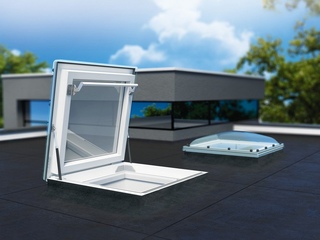Opening flat roof lights: VELUX Flat Roof Skylights
Which is best for my home?
From electric opening roof windows to fixed skylights, there are a number of available options to choose from when looking for the perfect rooflight for your home. The Rooflight Company offers a quality range of opening and fixed flat rooflight styles as well as bespoke solutions to suit any need or requirement. Below, we take a closer look at opening and non-opening rooflights, how they function, their benefits, any possible disadvantages, and help you decide what type of rooflight is best for your home and project.
See our complete guide to rooflights for a more comprehensive look into the styles and bespoke rooflight options available to you.
The difference between opening and fixed shut rooflights
Fixed flat rooflights are completely sealed to your ceiling with no way of opening them. This means that you won’t be able to use them as a means of entry to the roof or for ventilation purposes. Although this may seem like a disadvantage, fixed flat rooflights could be the perfect solution for your home depending on a number of factors. For example, non-opening rooflights are typically seen as the most leak-proof, the most secure, the most affordable, and may even let in a little extra light as compared to an opening rooflight.
Opening rooflights are oppositely very easily opened, either manually or automatically. The ability to open your rooflight window can be a great advantage, either to allow airflow or to create access from a rooftop terrace. Automated rooflights use an electric rooflight opener, and although manually opening rooflights are opened by hand, you can choose between “in reach” and “out of reach options” – depending on your ceiling access. Quality opening rooflights can be much more expensive than non-opening rooflights, but they should match them in water resistance, security, and aesthetics.
Non-opening and opening rooflights: What to consider?
There are a few factors to consider when deciding between an opening rooflight and a fixed flat rooflight.
Budget
Non-opening windows are typically an affordable and cost-effective way to benefit from the natural light and airy aesthetics of a roof window. Fixed shut rooflights are significantly less expensive than an opening rooflight, especially when comparing them to electric opening windows.
Either type of rooflight will inevitably reduce spending on bills by transforming your home into more energy and thermally-efficient space. Although it may require a little extra investment, and if your budget allows, opening rooflights can provide extra interior temperature control – an invaluable feature to rooms such as kitchen and bathroom extensions.
For a more comprehensive look into rooflight price factors, see our guide, How Much Does a Rooflight cost?
Ventilation
One of the biggest benefits of opening rooflights is the added function of natural ventilation.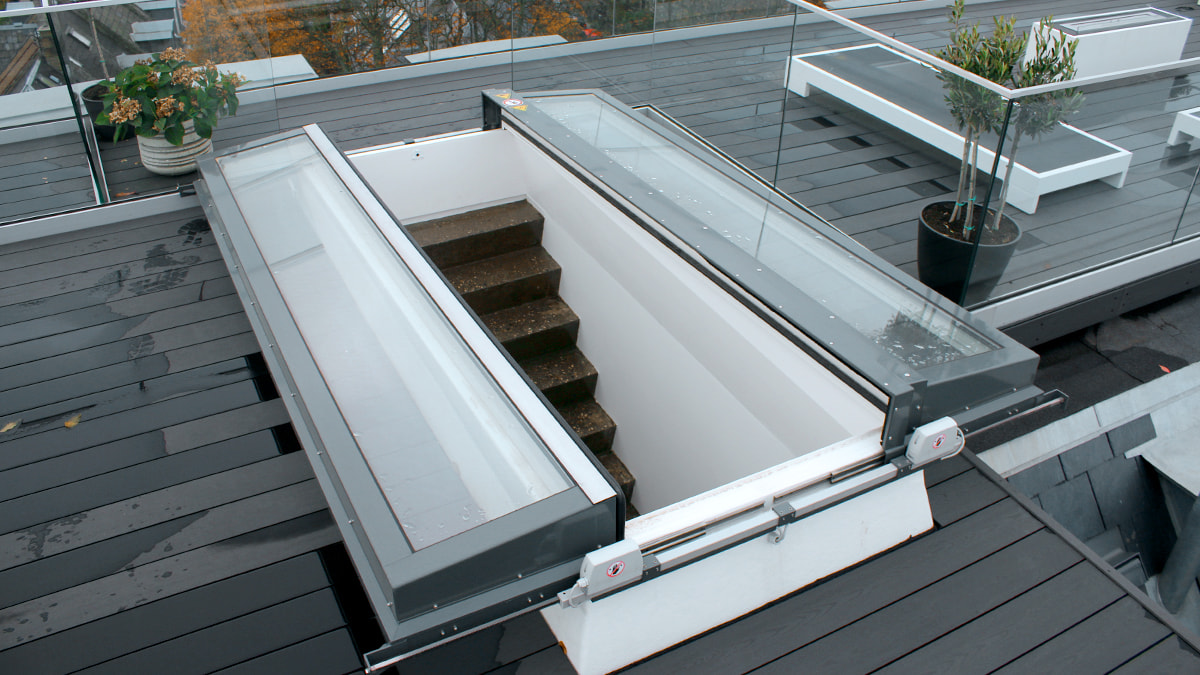
In rooms without opening widows or spacious doors, proper ventilation from an opening window can make all of the difference. This is especially true in rooms that experience a lot of moisture, steam, or strong smells. Opening windows will enhance any room visually while allowing hot air to escape and circulate in fresh air from outside – preventing excessive condensation, mould growth in bathrooms, smoke, and odours.
Security
Fixed flat rooflights are completely sealed and inaccessible from the outside. Our opening rooflights are still designed to the highest standards that consider security, however, if security is of major concern then a non-opening rooflight may be the best option.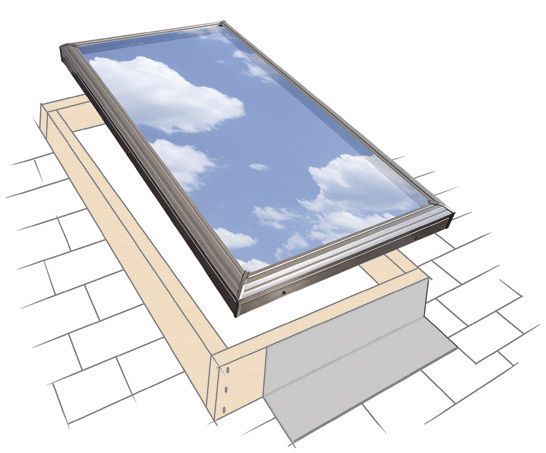
Rest assured that all rooflights and skylights are made to meet the highest of security standards – from PAS24 certifications to fulfilling all Part Q building regulation requirements. This includes opening rooflights!
A popular option for high-security buildings such as banks or schools is our Secured by Design-approved rooflight with reinforced structure for additional piece of mind.
Read more on rooflight security in our blog, Are rooflights secure?
Building regulations
Most skylight and rooflight projects do not require planning permission, but it is still important to consider the type of home you are working with and any building regulations you may have to adhere to. For example, homes built in Conservation Areas may require side-facing rooflights to be fixed shut and non-opening unless they are located over 1.7 metres from the floor level. Check with your local planning authority on whether you need planning permission or not, as ultimately this is your responsibility.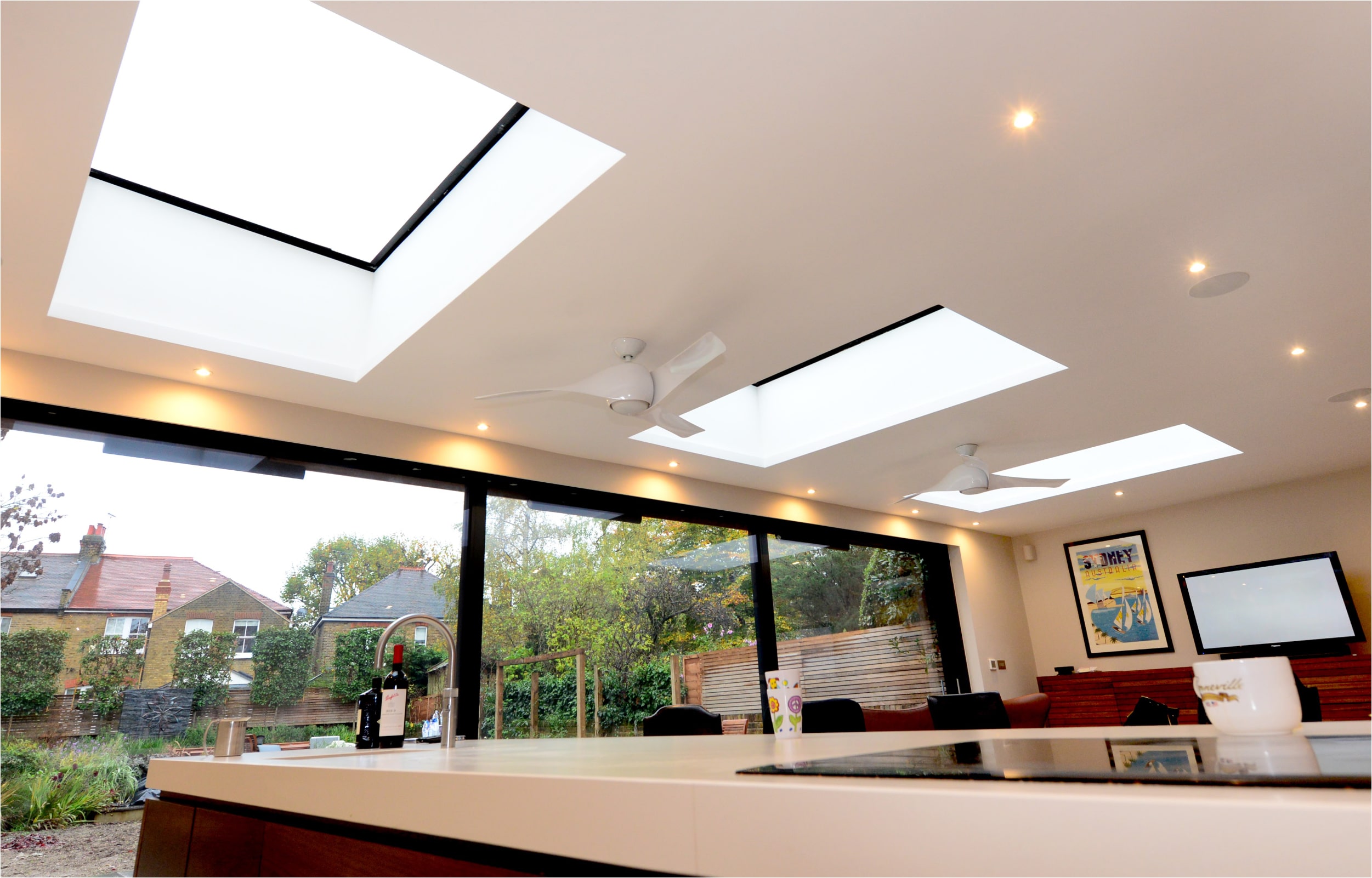
Our Conservation Rooflight range is available as both opening and non-opening and will ensure you meet every specific requirement set by the National Trust and English Heritage. You may need to also consider rooflight U values and energy efficiency. Our fixed flat rooflights and non-opening pitched roof windows are designed with energy conservation and thermal performance in mind, going above and beyond all regulation requirements.
For further guidance on building regulations and rooflights, see our guide, Do rooflights need planning permission? Please contact a member of our knowledgeable team if you have any questions or concerns, we would be happy to help.
Style
Rooflights of all types will enhance your home visually, with bright, eye-catching features and a light aesthetic. Most of our quality rooflight ranges offer both opening and fixed shut options, but each type may vary in its appearance and construction. This is because extra metal work is sometimes needed to support the hinge mechanisms and casement of opening rooflights.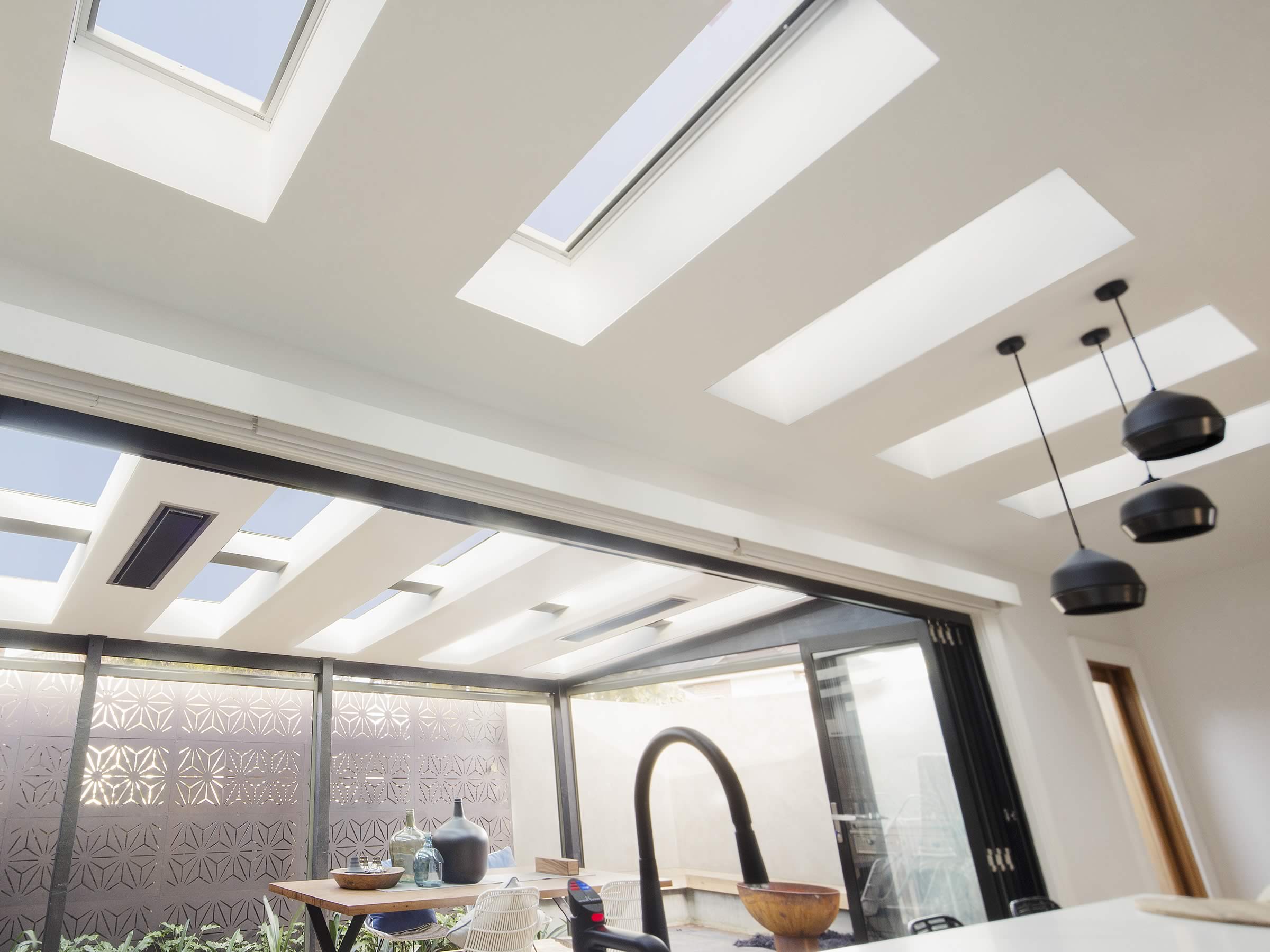
Explore our neo® Advance fixed shut rooflight range that ensures optimal light transmittance and a view free of frames or fixings.
Bespoke non-opening and opening rooflight solutions
If you are looking for a skylight opening solution that is totally unique, the Rooflight Company can design for you a completely individual and bespoke rooflight, made specifically for your home. Take your pick of non-opening or opening features, from fixed shut to motorised opening.
Whatever the project, our expert Rooflight Company team has the passion and industry knowledge to craft your skylight dreams into a reality. With complete freedom of choice, you can be fully involved with the design process every step of the way. If you want an opening rooflight, you can pick from four different types of electric and motorised systems and from multiple different handle types.
Explore our complete range of opening and fixed flat rooflights today. Feel free to get in touch with a member of our knowledgeable team for guidance or if you have any questions. We are happy to help.
Flat Roof Skylights and Hatches
Flat Roof Skylights
Quick and easy solutions for skylights on a flat roof
It’s a common misconception that skylights and flat roofs don’t mix, but VELUX is here to disprove that with our newly expanded flat roof products. With a VELUX Flat Roof Skylight designed to meet the growing demand for skylights in homes with flat or low-pitch roofs, you can transform and improve virtually any space with daylight.
These new Flat Roof Skylights are fitted in a PVC curb and topped with one of two covers: CurveTech glass or polycarbonate dome. Designed with flat roofs in mind, CurveTech glass is a curved, edge-to-edge cover that allows rainwater to easily disperse off the glass.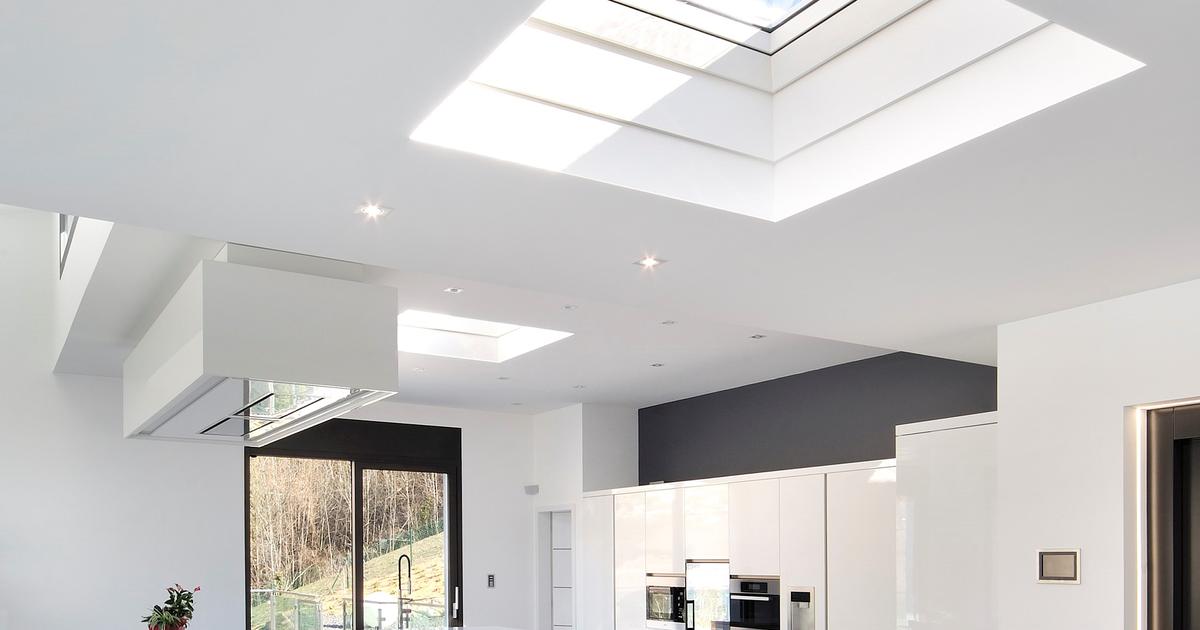
Sort By:
Featured ItemsNewest ItemsBest SellingA to ZZ to ABy ReviewPrice: AscendingPrice: Descending
Products Per Page:
812162040100
-
Choose Options
Velux
VELUX 22-1/2 in. x 46-1/2 in. Fixed Skylight FCM 2246
Now:
$248.00
Our Top-Selling Fixed Skylight
The VELUX FCM 2246 fixed skylight is our number one best seller every year. It’s great for increasing visual areas in your home or office that are presently dark. Not just that but it adds a nice view of… -
Choose Options
Velux
VELUX 46-1/2 in.
x 46-1/2 in. Fixed Skylight FCM 4646
Now:
$408.00
Our Top-Selling Fixed Skylight
The VELUX FCM 4646 fixed skylight is our number one best seller every year. It’s great for increasing visual areas in your home or office that are presently dark. Not just that but it adds a nice view of… -
Choose Options
Velux
VELUX 22-1/2 in. x 22-1/2 in. Fixed Skylight FCM 2222
Now:
$178.00
Our Top-Selling Fixed Skylight
The VELUX FCM 2222 fixed skylight is our number one best seller every year. It’s great for increasing visual areas in your home or office that are presently dark. Not just that but it adds a nice view of… -
Choose Options
Velux
VELUX 14-1/2 in.
x 30-1/2 in. Fixed Skylight FCM 1430
Now:
$182.00
Our Top-Selling Fixed Skylight
The VELUX FCM 1430 fixed skylight is our number one best seller every year. It’s great for increasing visual areas in your home or office that are presently dark. Not just that but it adds a nice view… -
Choose Options
Velux
VELUX 22-1/2 in. x 70-1/2 in. Fixed Skylight FCM 2270
Now:
$445.00
Our Top-Selling Fixed Skylight
The VELUX FCM 2270 fixed skylight is our number one best seller every year. It’s great for increasing visual areas in your home or office that are presently dark. Not just that but it adds a nice view of… -
Choose Options
Velux
VELUX 14-1/2 in.
x 46-1/2 in. Fixed Skylight FCM 1446
Now:
$209.00
Our Top-Selling Fixed Skylight
The VELUX FCM 1446 fixed skylight is our number one best seller every year. It’s great for increasing visual areas in your home or office that are presently dark. Not just that but it adds a nice view of… -
Choose Options
Velux
VELUX 30-1/2 in. x 46-1/2 in. Fixed Skylight FCM 3046
Now:
$370.00
Our Top-Selling Fixed Skylight
The VELUX FCM 3046 fixed skylight is our number one best seller every year. It’s great for increasing visual areas in your home or office that are presently dark. Not just that but it adds a nice view of… -
Choose Options
Velux
VELUX 34-1/2 in.
x 34-1/2 in. Fixed Skylight FCM 3434
Now:
$334.00
Our Top-Selling Fixed Skylight
The VELUX FCM 3434 fixed skylight is our number one best seller every year. It’s great for increasing visual areas in your home or office that are presently dark. Not just that but it adds a nice view of… -
Choose Options
Velux
VELUX 22-1/2 in. x 34-1/2 in. Fixed Skylight FCM 2234
Now:
$232.00
Our Top-Selling Fixed Skylight
The VELUX FCM 2234 fixed skylight is our number one best seller every year. It’s great for increasing visual areas in your home or office that are presently dark. Not just that but it adds a nice view of… -
Choose Options
Velux
VELUX 30-1/2 in.
x 30-1/2 in. Fixed Skylight FCM 3030
Now:
$266.00
Our Top-Selling Fixed Skylight
The VELUX FCM 3030 fixed skylight is our number one best seller every year. It’s great for increasing visual areas in your home or office that are presently dark. Not just that but it adds a nice view of… -
Choose Options
VELUX CG2 4949 Acrylic Double Dome Curb Mounted Commercial Skylight
Now:
$682.00
VELUX Acrylic Double Dome Curb Mount Skylights
Redesigned skylight frame replaces the CMA
Neutral grey exterior color
Encapsulating inner frame is 100% thermally broken
New and improved frame design
50-year… -
Choose Options
Velux
VELUX 22-1/2 in.
x 30-1/2 in. Fixed Skylight FCM 2230
Now:
$215.00
Our Top-Selling Fixed Skylight
The VELUX FCM 2230 fixed skylight is our number one best seller every year. It’s great for increasing visual areas in your home or office that are presently dark. Not just that but it adds a nice view of…
Anti-aircraft lamps, price from the manufacturer. Installation of antiaircraft lamps on a turn-key basis – al-solution.ru
Antiaircraft lamps, the price from the producer. Turnkey installation of rooflights – al-solution.ru – Moscow
Types of skylights
Spotlights
Spotlights are designed for local illumination of a certain area or room. They can have a rectangular, domed, pyramidal shape. Equipped with doors that open for ventilation or have only blind elements.
The design is designed individually, taking into account the area of the room, the functions that will be performed and the requirements of the customer.
Application
Private houses Roofs of extensions to the house Winter gardens and greenhouses Production shops
Tape lights
Tape lights represent a large glazed area of the roof. The shape of the structure can be any – rectangular (with a shed and gable roof), pyramidal or arched. Provide high light transmission.
Equipped with ventilation hatches. A solar control film is used to protect against direct sunlight.
Application
Industrial buildings Shopping and entertainment centers Public buildings Office centers
Standard designs
Flat single slope
Double slope
Multi slope pyramidal
Arched
Domed
Turnkey skylights
We will design, manufacture a structure based on operational requirements, the capabilities of the roof and the facility as a whole.
Aluminum profile
We assemble standard and non-standard designs for zenith glazing of industrial, public and residential buildings from aluminum profiles from market leaders.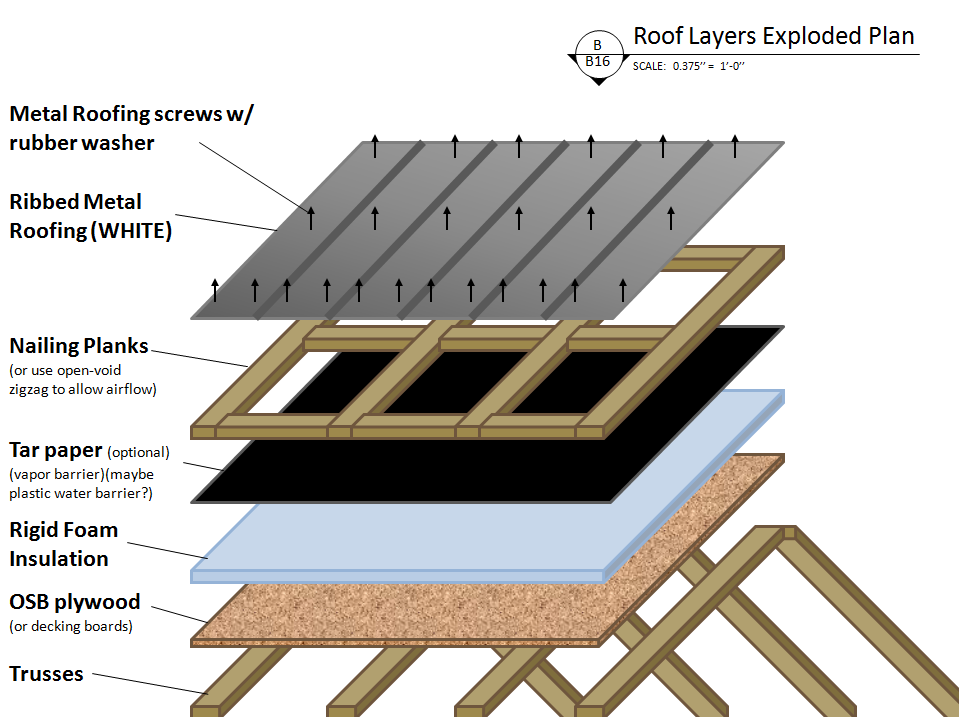
-
Krauss
-
Alumil
-
Realit
-
Alutech
-
Alumark
-
VIDNAL
-
NewTec
-
AGS
-
SIAL
-
Schuco
Any color of aluminum surfaces
Rooflight frame colors vary according to the RAL scale, which offers 200 shades of basic colors.
Aluminum profiles are painted by powder spraying, which results in the formation of a durable color film on the metal, which protects the surface from moisture and mechanical damage! Read more about all decorative techniques in a special section.
Units and components
Materials, mechanisms, automation, additional options are selected during the design of the structure, taking into account the type of building, the functional purpose of the rooflight being designed and customer requirements.
Frame
Frame made of aluminum and steel profiles. The flexibility and high strength of the metal make it possible to assemble a complex domed or pyramidal structure for installation on the roof of a converted building with an insufficient number of windows.
Glazing
Transparent filling made of plexiglass, polycarbonate or tempered glass units. In addition, a double-glazed window can be with multifunctional, tinted or self-cleaning glass or special heated glass.
Fittings
We install German fittings on the movable wings of the skylight – inclined and vertical transoms, hatches for manual and automatic control. Opening sash mechanisms are selected at the stage of design and calculation of the weight of the elements.
Automation
Strip lights in industrial premises and shopping centers can have fully automated ventilation systems – automatically open for ventilation using a timer. Atmospheric sensors will ensure that the hatches are closed when the weather conditions change.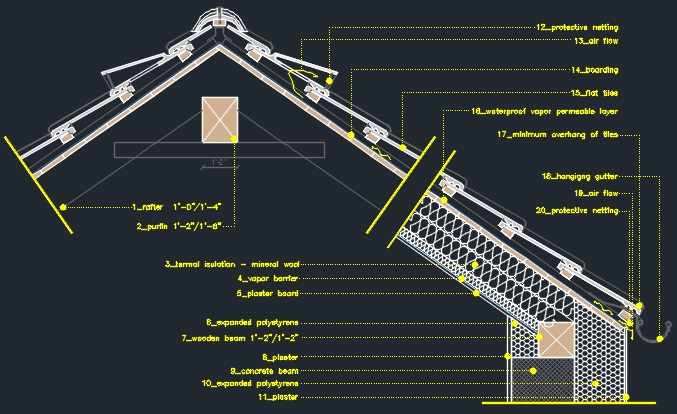
Optional
Smoke hatches are also equipped with sensors that react to the appearance of smoke in the room. In addition, temperature sensors are installed in industrial premises, which, at critical values, give the electric drive a signal to open hatches for ventilation.
Benefits of introducing skylights
- Energy savings
- Fire Safety
- Ventilation
- Large selection of configurations
- Building aesthetic
- Lots of light in the room
- Reliability
- Durability
- Easy maintenance
Provides quality daylight lighting for industrial sites and shopping arcades while maximizing sunlight and saving energy costs. A domed point or flat strip lamp will allow you to operate a deaf room without windows.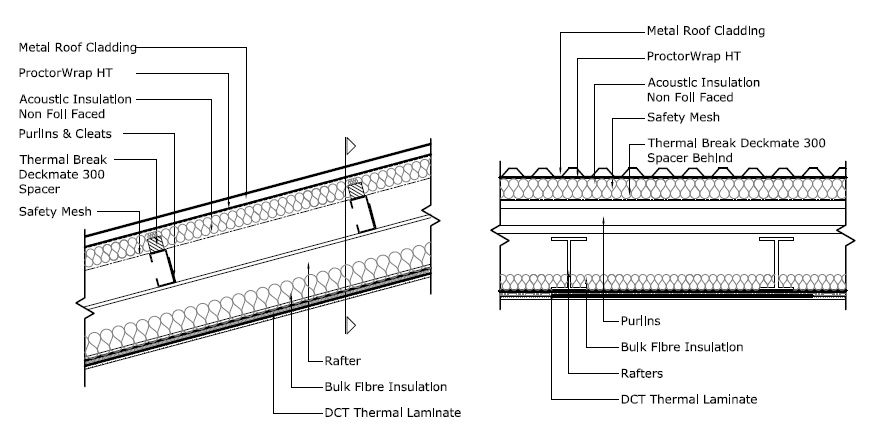
Due to the lightness of the aluminum frame, it can be installed on almost any roof to achieve effective lighting without additional window openings that interfere with the appearance of the facade.
Volumetric translucent domes and pyramids decorate the building, give it novelty, visual lightness and elegance.
80 years
service life
aluminum structures
Price list 2023
Skylight is a rather complex design, the cost of which depends on many parameters, and not only on the selected profile. Contact our specialists, they will make an estimate for your project!
| Profile | Cold | Warm | Note |
|---|---|---|---|
| Schuco Germany | – | – | cost calculation on request, for a specific project |
| Reynaers Belgium | – | – | — |
| AGS Russia | – | – | — |
| SIAL Russia | – | – | — |
| Alutech Belarus | – | – | — |
| Alumark Russia-Germany | – | – | — |
| Vidnal Russia | – | 22,000 RUB/m 2 | – |
| NewTec Italy | – | – | — |
| Krauss Russia | – | – | — |
| Alumil Greece | – | – | — |
Calculation of the cost of rooflight
1.
dotted
Tape
2. Do you have profile preferences?
No
Yes, choose
Schuco
Reynaers
Provedal
AGS
SIAL
Alutech
Alumark
VIDNAL
NewTec
Krauss
Alumil
3. Choose the form of construction:
FlatSelect
Dual slopeChoose
Multi-pitchChoose
ArchedChoose
DomedSelect
OtherChoose
4. Specify the area of glazing: m 2
5. Ventilation hatches needed?
No
Yes
6.
Polycarbonate
Glass
double glazing
Our managers will help you with the choice of the optimal profile, make an instant calculation and answer all your questions!
Special offer!
- For private customers
- For architects, builders, foremen
Application for cost calculation
Hurry up to place an order before July 31 and we will perform all installation work with a 25% discount
Attach drawing
I agree to the processing of personal data
Application for cost calculation
Colleagues, we will offer you special prices for glazing your objects and favorable terms of cooperation!
Attach drawing
I agree to the processing of personal data
Photo gallery
Video review
Why customers choose us
Experience
17 years on the
glazing market!
Production
Our own production allows us to offer the best prices on the market!
Selection
We work with different profile systems and fittings
Deadlines
We work with large volumes and fit in a short time
Turnkey work
All work from design to installation at your facility!
Customer reviews of our work
-
I decided to replace the old window frames in the apartment, I was very worried when choosing windows: I wanted to find budget prices without sacrificing the quality of work.
Companies advised by friends did not inspire confidence. I randomly ordered a calculation of balcony glazing with warm aluminum on the OknaStreet website. I literally immediately received a transparent calculation, the manager contacted me, answered very intelligibly to my, as I now understand, ridiculous questions. As a result, a measurer came, and a week later master Dmitry Kraft and his team made balcony glazing, simple, without pretension, but with a very high-quality finish. I liked the way the craftsmen work – no fuss, no noise, no litter. The whole job took a day and a half. With warming I will glaze the apartment completely in this company!
Marina Kulikova
Moscow -
We are making a cottage for a very picky client, who, as it turned out, also has a project that is not the best in terms of entrance doors and windows, the terrace is generally on the windward side, it was not at all clear how the glazing and what to do. I decided to look for a good contractor for glazing, a colleague advised Oknastreet.
We chose for a long time, settled on multi-chamber profiles with thermal inserts, the client approved (he double-checked everything, Pavel just got the measurer for days). In fact, everything was done with a bang, efficiently, quickly, in terms of thermal insulation, the client (already settling in slowly) was satisfied. Installed by installer Andrey Burunov with a team, I recommend.
Dmitry Skaredov
settlement Veshki, Moscow region -
I express my gratitude to the manager Kirill and his colleague, I forgot the name, who is responsible for the design of structures. They helped me a lot with the choice, their advice is priceless. I don’t know much about construction, everything is on trust in specialists. It was necessary to glaze the summer terrace in my cafe, I was offered a sliding accordion structure, which can be fully opened in warm weather. A reliable system was needed so as not to call the masters every week. I almost missed the budget that I allocated for this case.
Well, and most importantly, everything was done in a short time, without stretching the installation work for months. I am very pleased with the quality, so far there are no complaints – it simply opens and closes, there are fewer sounds from the street. Now the terrace is a favorite place of our visitors. Thanks a lot! Good luck and prosperity to your company.
Andrey Shats
Moscow -
Okna Street Company has turned my balcony-terrace on the top floor into a winter garden! It’s been a magical place! The aluminum structure was designed from scratch just for me. At first, there was a rather long stage of design and manufacture, then installation work began. We don’t live in an apartment yet, so I can’t say that this process bothered me a lot, although I didn’t meet the deadlines. Special thanks to the installers for their careful attitude to the adjacent premises – no debris, no damage. They electrified, made the floor, organized a panoramic exit, the slopes are neat.
It’s very nice when a company takes responsibility for the whole range of work, then you don’t have to finish something, look for contractors for small jobs, and this is not easy. I recommend these guys to all my friends with both hands, however, I did not expect that cooperation with window workers could end in such a positive way.
Olga Dolzhenko
Moscow -
Office partitions were installed by installers Lyakhovoy and Gimanov, contract No. 27145, Aviamotornaya metro station. Engineer Andrey, who came to us after filling out an application on the website, is simply a god of his business, he spent half a day with us, decided some positions along the way, changed something in terms of the breakdown of the premises. We bought the premises of the former dining room for the office, it is clear that there was nothing but walls, but the plans were to make fractional zoning, bring small offices for employees into one line, glaze my office separately, make the kitchen for people – an autonomous recreation area, “dressing room” for guests.
A lot of partitions had to be installed, in general, Andrey can be safely considered a co-author of our office project. I am very pleased with the quality of office doors and partitions, as far as I understand, there will be no issues regarding service maintenance with this company. Glad you got it done so quickly!
Ivan Nesterov
Moscow -
I would like to thank Ivan and Sergey, the guys who put me a panoramic balcony with a panoramic exit from the bedroom. I agree that the work is difficult, according to the reviews of friends, I know that few people can be trusted with French glazing on such a wide opening, but in my case everything turned out very well, convenient, high-quality, beautiful. And, most importantly, they chose an aluminum profile of the right color for me – it fit perfectly under the facade. In general, it looks solid, I admire the surroundings without fear of breaking anything)). The only drawback is that now you have to maintain order on the balcony, you won’t leave garbage and unnecessary things until better times, but this is for the best :).
Grigory Aksyonov
Odintsovo, Moscow region -
Ordered glazing for a porch in Oknastreet for a house. I am a builder myself, so some aspects of the work of both the measurer and the installers were clear to me. I must say right away that there were no hitches in terms of time, everything was of high quality, without distortion, everything was transparent at the price, everything was as agreed. Very sensible installers, they discussed everything in the process – and how to insulate the adjacent walls, and the ceiling. The profile pleased me with its quality – I installed VIDNAL so as not to overpay for unnecessary bells and whistles and brand. I highly recommend this system to anyone who plans to glaze extensions with aluminum, the manufacturer is domestic, the price is moderate and the quality is on top. In the summer, we plan to glaze the barbecue gazebo at my mother-in-law, I hope we will work again. Nice to deal with professionals!
Alexander Koptyug
Malakhovka, Moscow region
Modern architecture finds its expression in simple and concise forms,
open spaces and a large area of glazing.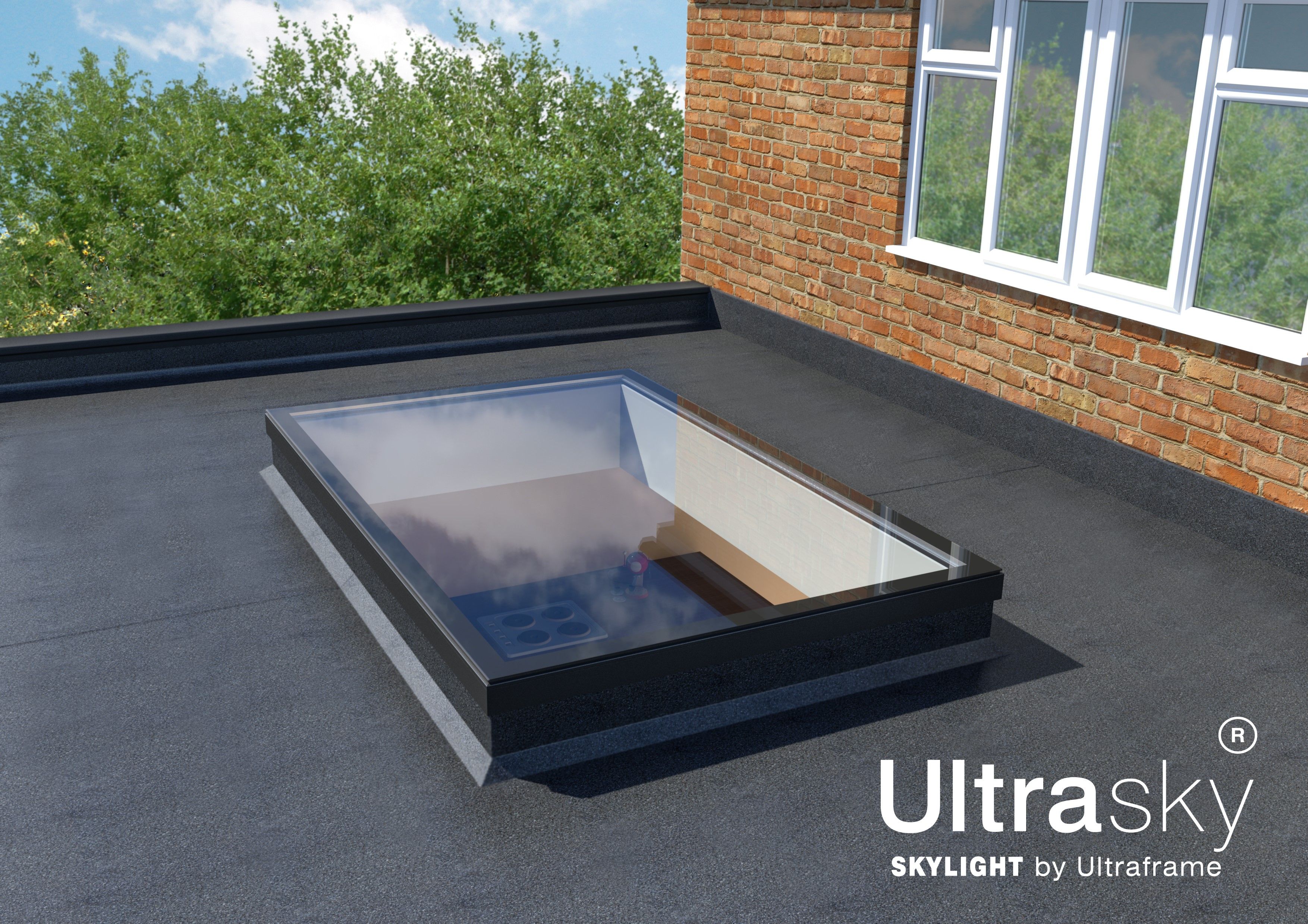
What previously could only be seen in pictures in real estate magazines,
became available to a large number of people.
If you want panoramic glazing – please, glass walls – no problem!
Denis Rafiev
company founder
Denis Rafiev
founder of the company
Modern architecture finds its expression in simple and concise forms,
open spaces and a large area of glazing.
What previously could only be seen in pictures in real estate magazines,
became available to a large number of people.
If you want panoramic glazing – please, glass walls – no problem!
Let’s discuss your project?
Fill out the contact form, we will call you back within 10 minutes! Our specialist will answer all your questions, recommend a profile system, help calculate the cost of an aluminum structure:
I agree to the processing of personal data
Application
for the calculation
cost
Antiaircraft lamps (light) on a turnkey roof from the manufacturer
-40%
5-year warranty
The promotion is valid only until Thursday
Send us a request right now, and we will fix you a discount, offer you a favorable price from the manufacturer of anti-aircraft lamps, and give gifts.
-
3D visualization of the project
-
energy-saving double-glazed windows
-
construction debris removal
More than 2 0 years of experience
fabrication and installation
Model as a gift
Get a 3D visualization of your project
Individual design
forms of lanterns of any complexity
We comply with GOST
in the installation of skylights
Price and product types
Double slope
from 23 240 RUB*
Old price 37 230 RUB
Pyramidal
from 24 500 RUB*
Old price 35 500 RUB
Flat
from 21 000 rub*
Old price 24 350 rub
Dome
from 26 320 rub*
Old price 2 RUB 8,900
*Call us at: +7 (499) 648- 33-51, and we will calculate the exact cost of the order according to your dimensions, including installation and accessories.
Find out the cost of anti-aircraft lamps “turnkey”
Leave a request – and get a model of the future project as a gift. We will perform the calculation of anti-aircraft lamps for you, we will advise on the order.
4 standard lamp designs
|
Spot 9016 6 |
Band |
|
Square, pyramid, rectangle or polyhedron. Each lantern will illuminate a certain area of space. Deaf or with sections that open for ventilation, the number of which varies as desired. Often, we recommend our customers to install hinged sashes with mechanical, pneumatic, electric drives. |
The length of the strip glazing of skylights is up to 15 m, with a maximum width of 6 m. You can mount the tape along the ridge on the roof, between the rafters of the slopes, the capital elements of the coating on the roof of the building. |
1
1
1
|
Skylights |
Deaf |
|
under the roof. |
This anti-aircraft element is designed for insolation. Light-transmitting skylights of roofs are the most effective for energy savings and allow to increase daylight hours. This is important not only for owners of offices and commercial premises, but also for private residential buildings. |
1
For more than 20 years, we have been ordered to install lamps in:
1
industrial buildings;
apartments and flats;
cottages, private houses;
business, shopping centers;
restaurants, shops;
establishments and offices;
exclusive vintage items.
Testing the finished product to give you peace of mind
Light transmittance
A transparent roof or part of it allows you to quickly build buildings with solid walls where a window is not needed.
Test pours
Finished skylights go through this testing step to evaluate their tightness.
Fire safety
Hatches built into the roof allow you to organize high-quality smoke removal, simplifying the elimination of fire, the evacuation of people.
Reliability
In the production of rooflights, GOST standards are taken into account, containing requirements for organic, reinforced, tempered glass.
Structural weight
Aluminum frame creates a minimum load on the main sections of buildings, including those made of quick-assemble lightweight modules!
More than 80 years of service
Manufactured from “eternal” materials – aluminum, architectural glass, steel. Therefore, the service life of anti-aircraft lamps made of aluminum profile is over 80 years.
Important features of our products
Profile Double-glazed windows and glass Gretsch-Unitas fittings Production according to GOSTs Fire safety
Profile.
Aluminum profile alloys do not create critical loads on the truss system, which makes it possible to make a frame for vertical placement of translucent edges. Triangular, the angle of inclination of which is not more than 80 °, trapezoidal, with an angle of up to 45 °, semicircle for the dome structure.
Price from rub*
*price per sq/m. Old price p
Double-glazed windows and glass.
Glass elements for filling the frame can be organic, tempered, reinforced architectural glass, special double-glazed windows with athermal coating, tinted. It is possible to install heated glass on the roof to avoid the accumulation of ice and snow in winter.
Price from rub*
*price per sq/m. Old price p
Gretsch-Unitas fittings.
Accessories for opening sashes are selected based on the additional load of wind, moisture, precipitation. Grids, aprons are made of stainless materials, structural difficulties in maintenance are taken into account.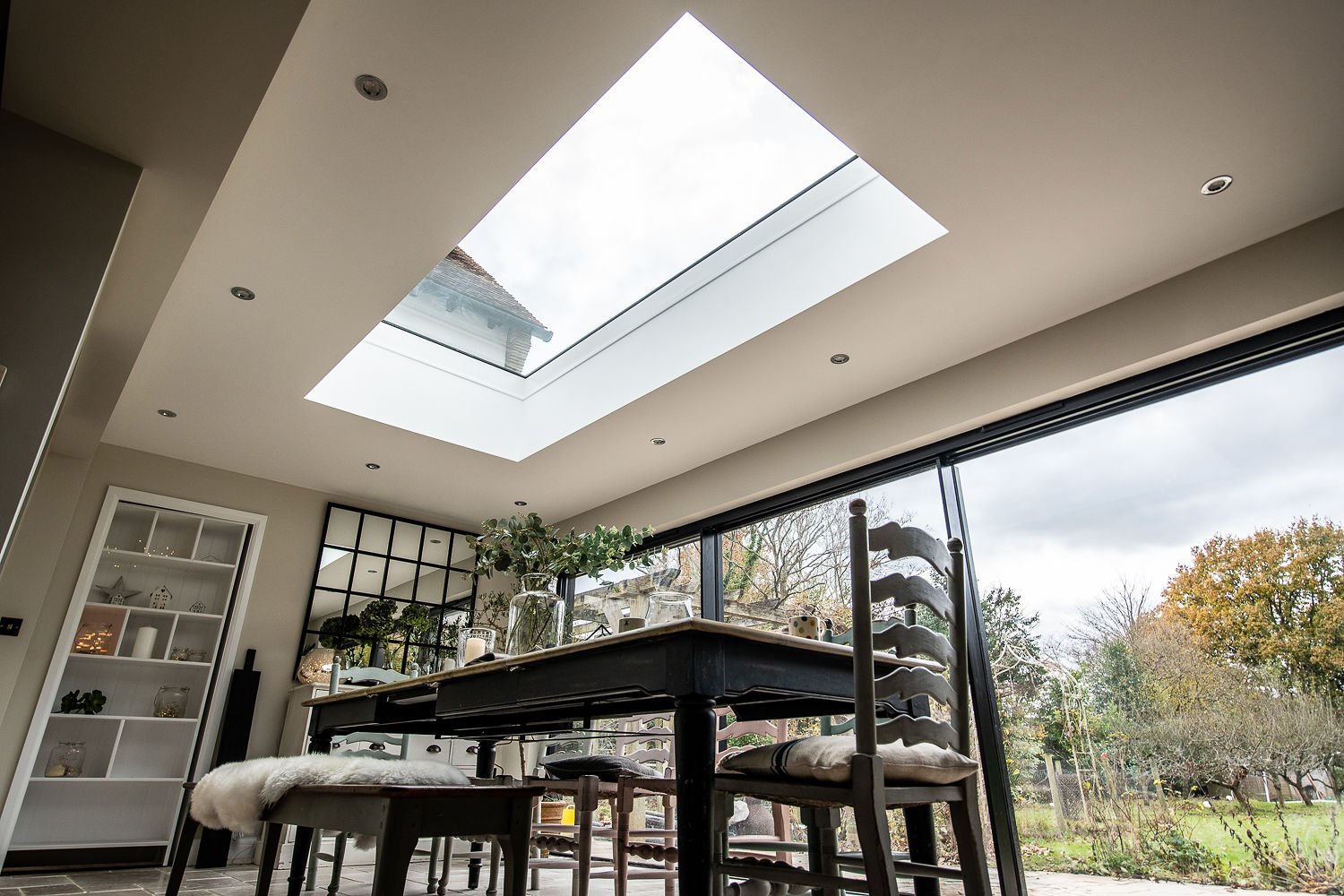
Price from rub*
*price per sq/m. Old price r
Production in accordance with GOSTs.
We design and implement any, including complex and non-standard, forms. When installing anti-aircraft lamps, the regulations of GOSTs are observed. The translucent roof is designed in accordance with the license we hold. For high-altitude work, special robots are involved. We use top Belgian sealants.
Price from rubles*
*price per sq/m. Old price p
Fire safety.
A special structural system has been developed for fire protection skylights: motorized doors connected to timers. Emergency smoke hatches are built into the general fire extinguishing system. The maximum safety – the fire-prevention complex works automatically.
Price from rub*
*price per sq/m. Old price R
Gallery of our works
Reviews about us
We ordered light-aeration lamps, we liked the cooperation, the order was executed very competently and efficiently.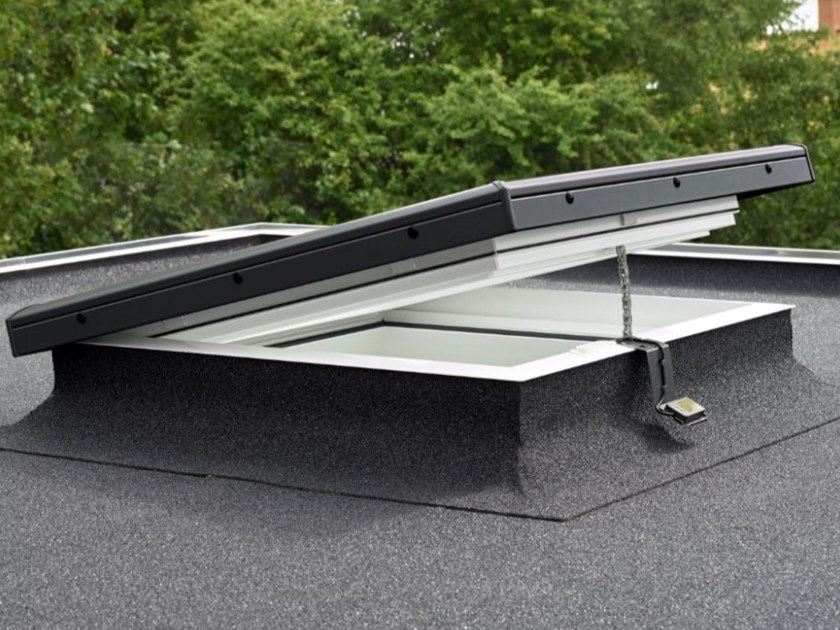
We were fitted with not a simple, but a triangular-shaped light lantern, at first I was worried that it would work inefficiently, would be unreliable. But in the end, all my doubts were dispelled at the stage of discussing work with managers. Very convincingly and reasonably all prompted, thanks to them and the masters.
Latnikova NataliaWe ordered lanterns for a flat roof. Now we have light, and you don’t have to worry about fire safety. Thank you!
Ukhtomtseva Zinaida IvanovnaWe bought roof lights, we are satisfied, there are no complaints. We plan to contact again.
Astebov KUThe aeration option you advised suited us. For the price, it’s normal, I won’t say it’s for nothing, but considering what prices are now for all prices, it’s quite profitable. Order, rated a five.
Volchkov I.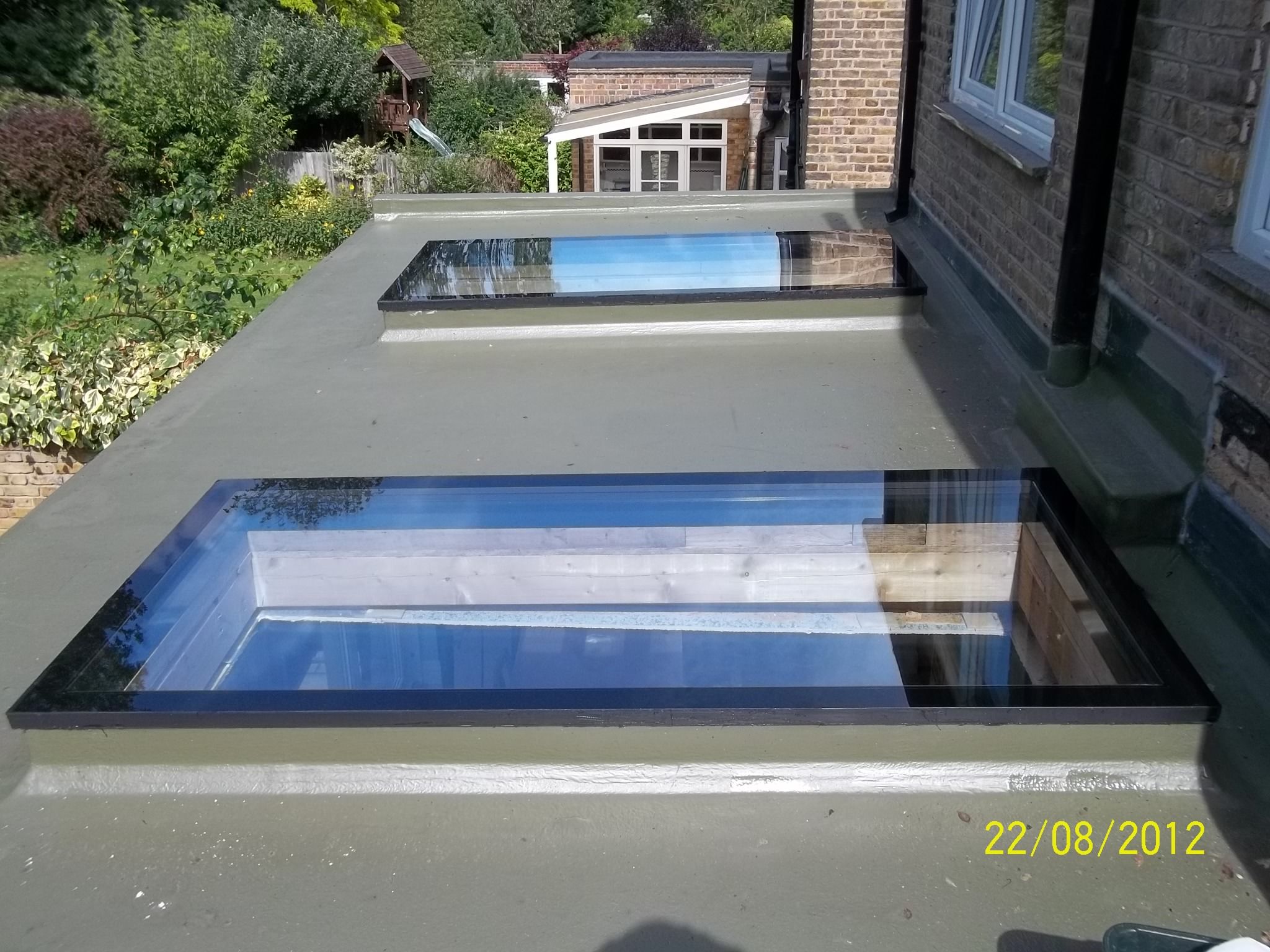 N.
N.
Thank you for the sensible and quick installation of anti-aircraft flat lights, I am sure that we will turn to you for help more than once.
Makhov Veniamin VitalievichProfessionally. I placed an order for two-slope anti-aircraft lamps, met the deadlines and the initial cost, which was announced during the first telephone conversation. Well done, not talkers and not grabbers.
Molotov AKA beautiful arched lantern, according to GOST, meets all the requirements and modern standards. It’s rare to find such quality work these days. And the deadlines are met, another nice bonus of cooperation.
Kapitanov OlegI took a round lantern, now I plan to equip my house and office further, choosing other options, fortunately, the company offers a great variety of them. I liked the gifts – an interesting idea, especially since they are so sensible and necessary for the customer. Keep it up!
Khobotov А.I have been cooperating for several years, I used to design glazing, now we have reached modern lighting. No complaints, all orders are executed clearly and on time. They work exclusively with this company, and I recommend them to everyone as reliable and knowledgeable partners.
Mikhail Sergeevich V.Contacts
We install windows in Moscow and the Moscow Region.
You can conclude an agreement at home – for this, just call our measurer (the service is free).
For the location of our other offices, please call: +7 (499) 648-33-51
Do you have any questions? Call us and we will clarify the cost of products with turnkey installation right now:
Send us a request, we will call you back, answer all questions, and determine the price for your order within 15 minutes!
Legal information
By continuing to use the site, you confirm that you have read the legal information provided and agree to the listed rights and obligations.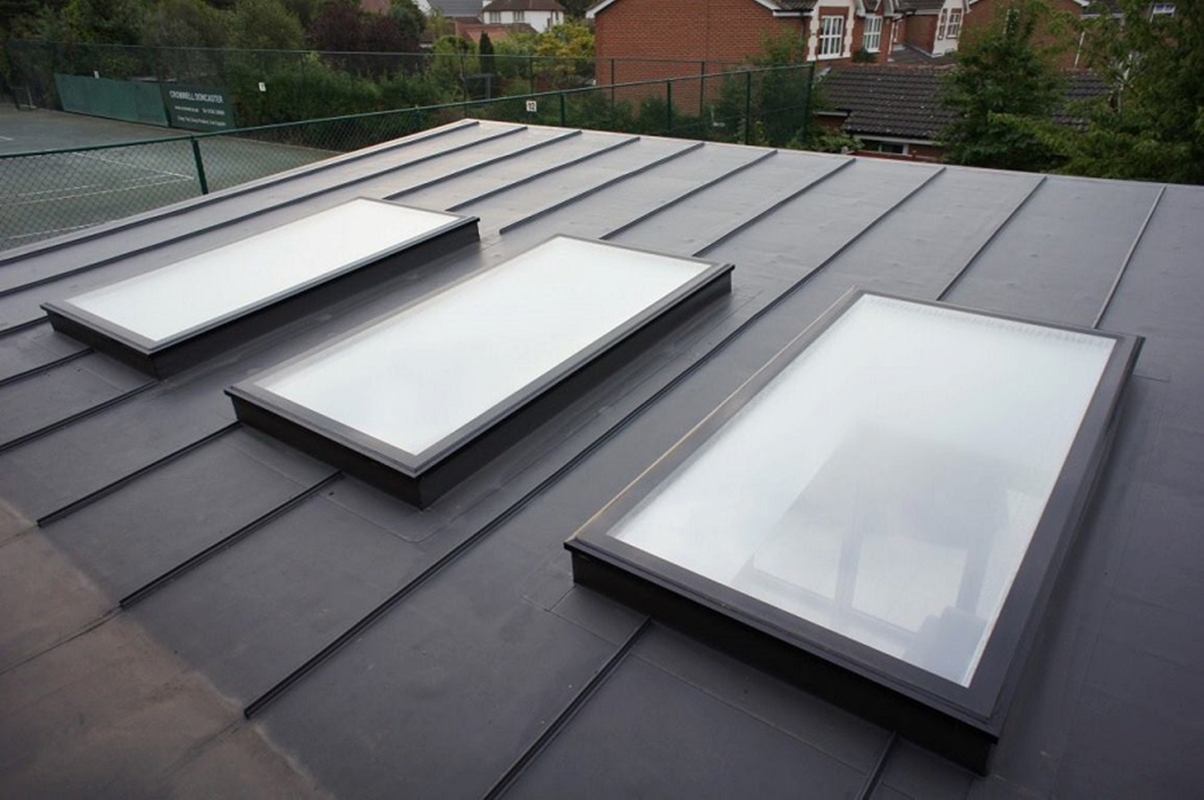
1. Fundamentals
1.1. This resource lists data about the PVC Windows Plant Company (VINDAL LLC, OGRN: 1197746218867), which are purely informative.
1.2. The Company has the right, at its sole discretion and without notice, to change the list of services and information contained on the Site, to improve or change the range of products.
2. Copyright
The content of the Site is the intellectual property of the PVC Windows Factory in accordance with the law of the Russian Federation on copyright and related rights. It is forbidden to copy, reproduce, edit, forward, publish on third-party sites without the written permission of the owner.
3. Privacy Policy
3.1. By sending your personal data to the Company, you thereby express your consent to the unlimited use of your full name, specified address, e-mail and phone number by representatives and partners of PVC Windows Factory.
3.2. Legal basis for the processing of personal information of clients: Federal Law “On Personal Data” and “On Advertising”; local laws.
3.3. Personal data can be used for the following purposes: registration and authorization on the Site; order processing; analysis of individual preferences of customers; mailings with notifications about promotions, discounts and special offers;
development of effective means of promoting the Company’s products; collection of statistical data on the functioning of the Site; determination of the winner in contests and promotions.
3.4. The company’s obligations are not to transfer personal data to outsiders, except for agents and parties to the contract who act in the interests of the client. We protect your personal information from unauthorized access.
3.5. The Company is authorized to distribute information about the client without indicating the full name to monitor the promotion tools and the operation of the Site as a whole.

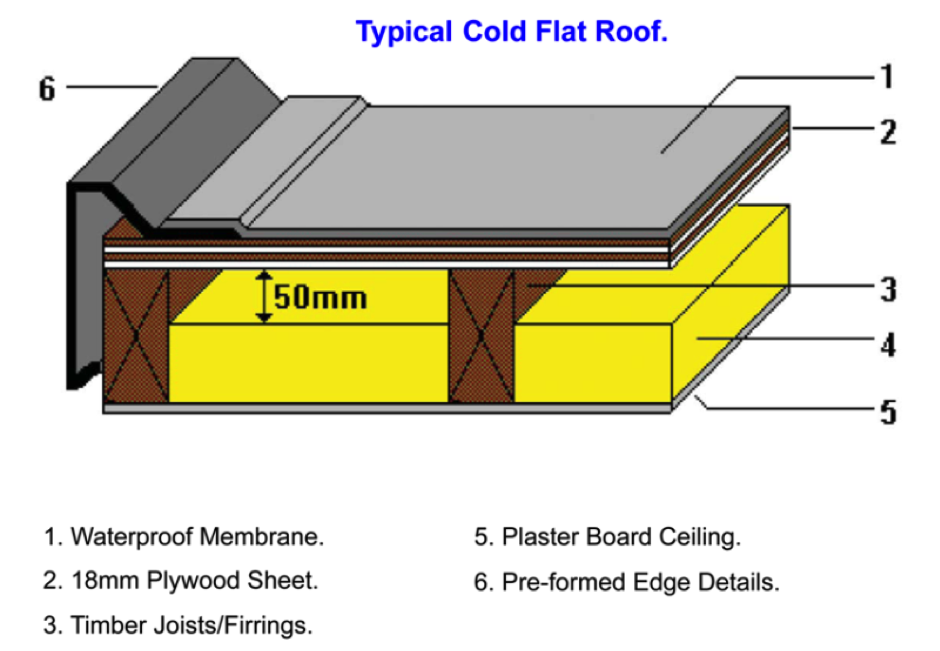 x 46-1/2 in. Fixed Skylight FCM 4646
x 46-1/2 in. Fixed Skylight FCM 4646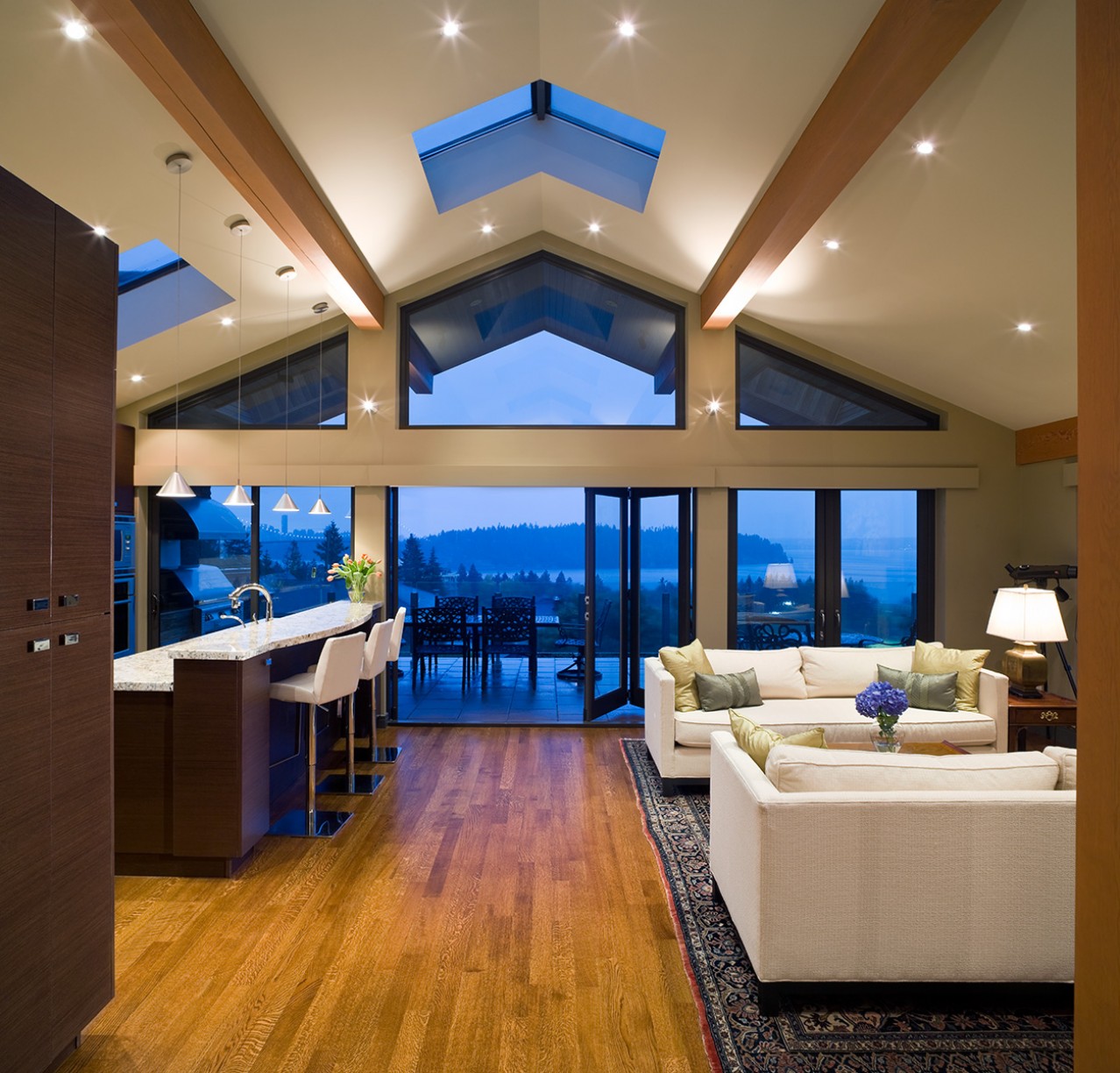 x 30-1/2 in. Fixed Skylight FCM 1430
x 30-1/2 in. Fixed Skylight FCM 1430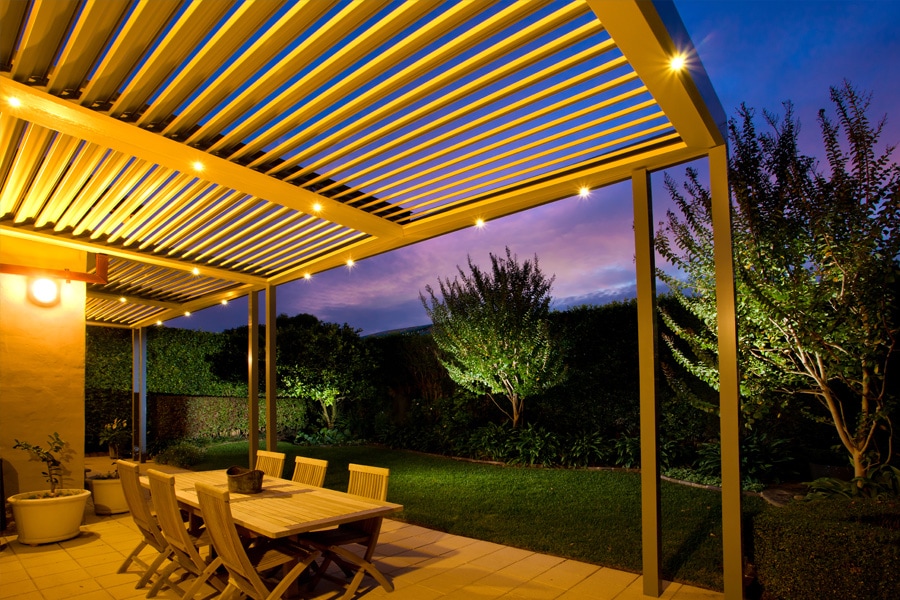 x 46-1/2 in. Fixed Skylight FCM 1446
x 46-1/2 in. Fixed Skylight FCM 1446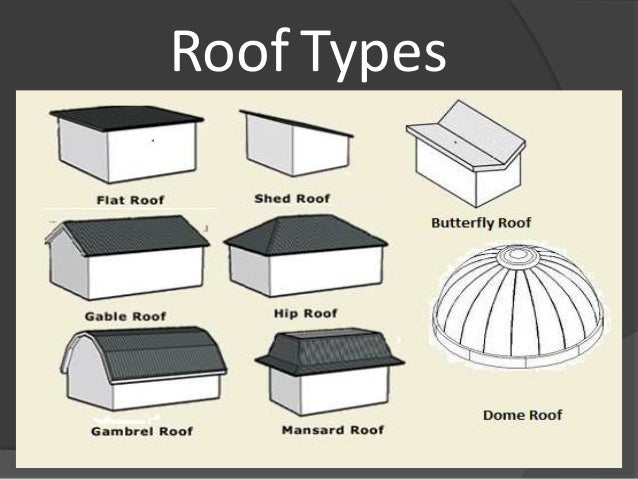 x 34-1/2 in. Fixed Skylight FCM 3434
x 34-1/2 in. Fixed Skylight FCM 3434 x 30-1/2 in. Fixed Skylight FCM 3030
x 30-1/2 in. Fixed Skylight FCM 3030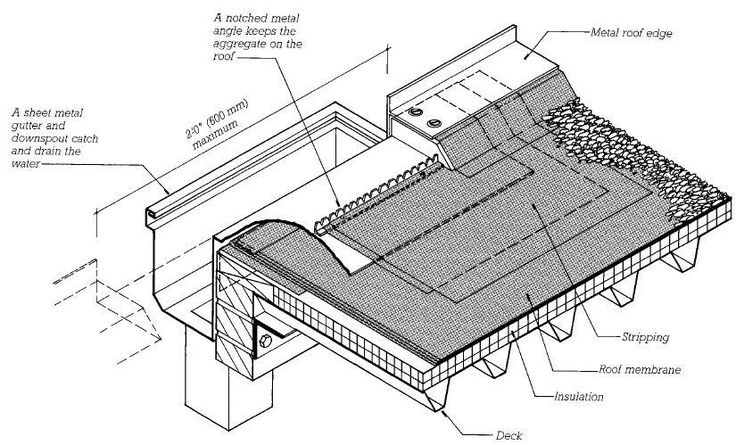 x 30-1/2 in. Fixed Skylight FCM 2230
x 30-1/2 in. Fixed Skylight FCM 2230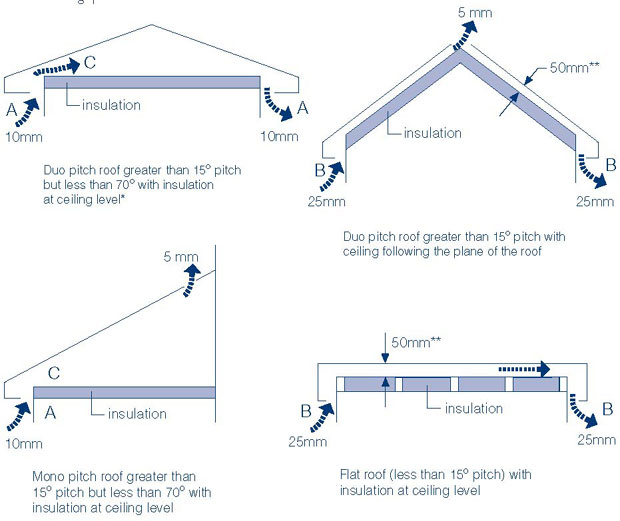 Companies advised by friends did not inspire confidence. I randomly ordered a calculation of balcony glazing with warm aluminum on the OknaStreet website. I literally immediately received a transparent calculation, the manager contacted me, answered very intelligibly to my, as I now understand, ridiculous questions. As a result, a measurer came, and a week later master Dmitry Kraft and his team made balcony glazing, simple, without pretension, but with a very high-quality finish. I liked the way the craftsmen work – no fuss, no noise, no litter. The whole job took a day and a half. With warming I will glaze the apartment completely in this company!
Companies advised by friends did not inspire confidence. I randomly ordered a calculation of balcony glazing with warm aluminum on the OknaStreet website. I literally immediately received a transparent calculation, the manager contacted me, answered very intelligibly to my, as I now understand, ridiculous questions. As a result, a measurer came, and a week later master Dmitry Kraft and his team made balcony glazing, simple, without pretension, but with a very high-quality finish. I liked the way the craftsmen work – no fuss, no noise, no litter. The whole job took a day and a half. With warming I will glaze the apartment completely in this company! 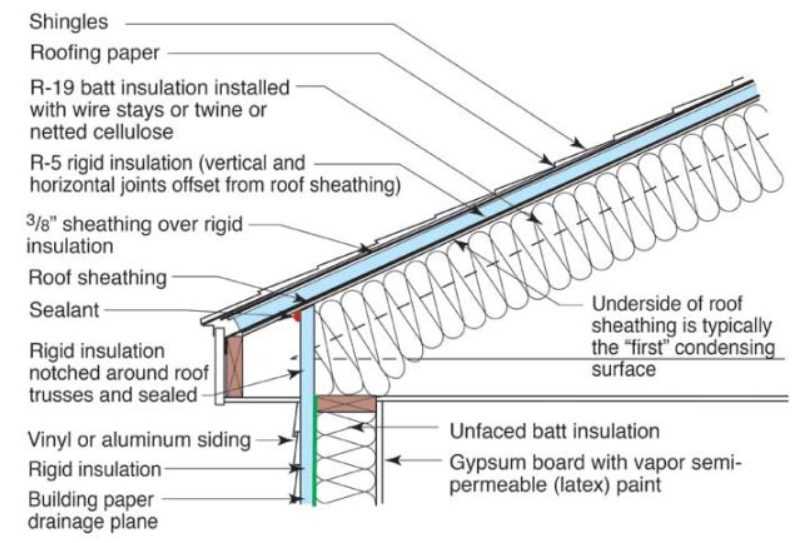 We chose for a long time, settled on multi-chamber profiles with thermal inserts, the client approved (he double-checked everything, Pavel just got the measurer for days). In fact, everything was done with a bang, efficiently, quickly, in terms of thermal insulation, the client (already settling in slowly) was satisfied. Installed by installer Andrey Burunov with a team, I recommend.
We chose for a long time, settled on multi-chamber profiles with thermal inserts, the client approved (he double-checked everything, Pavel just got the measurer for days). In fact, everything was done with a bang, efficiently, quickly, in terms of thermal insulation, the client (already settling in slowly) was satisfied. Installed by installer Andrey Burunov with a team, I recommend.  Well, and most importantly, everything was done in a short time, without stretching the installation work for months. I am very pleased with the quality, so far there are no complaints – it simply opens and closes, there are fewer sounds from the street. Now the terrace is a favorite place of our visitors. Thanks a lot! Good luck and prosperity to your company.
Well, and most importantly, everything was done in a short time, without stretching the installation work for months. I am very pleased with the quality, so far there are no complaints – it simply opens and closes, there are fewer sounds from the street. Now the terrace is a favorite place of our visitors. Thanks a lot! Good luck and prosperity to your company.  It’s very nice when a company takes responsibility for the whole range of work, then you don’t have to finish something, look for contractors for small jobs, and this is not easy. I recommend these guys to all my friends with both hands, however, I did not expect that cooperation with window workers could end in such a positive way.
It’s very nice when a company takes responsibility for the whole range of work, then you don’t have to finish something, look for contractors for small jobs, and this is not easy. I recommend these guys to all my friends with both hands, however, I did not expect that cooperation with window workers could end in such a positive way. 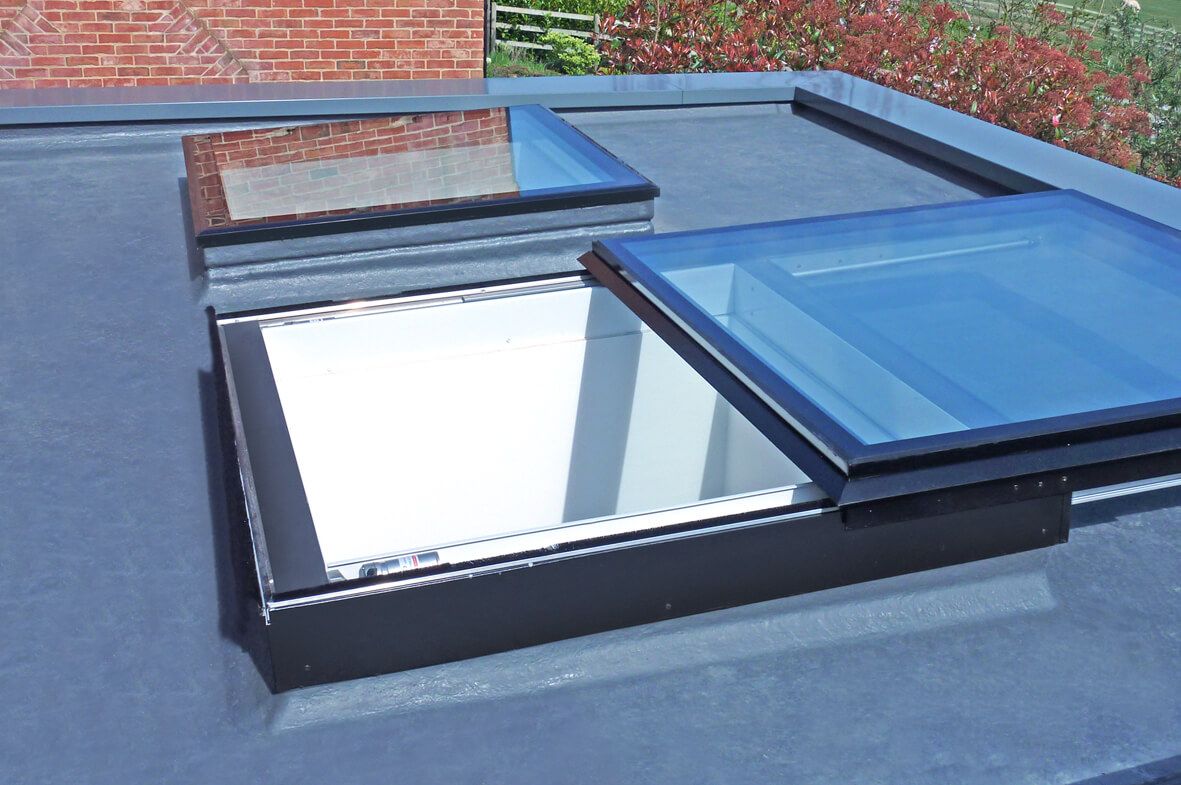 A lot of partitions had to be installed, in general, Andrey can be safely considered a co-author of our office project. I am very pleased with the quality of office doors and partitions, as far as I understand, there will be no issues regarding service maintenance with this company. Glad you got it done so quickly!
A lot of partitions had to be installed, in general, Andrey can be safely considered a co-author of our office project. I am very pleased with the quality of office doors and partitions, as far as I understand, there will be no issues regarding service maintenance with this company. Glad you got it done so quickly! 
 An industrial facility – a building, a structure requires the installation of skylights for a constant, stable output of industrial odors, toxic fumes, which will reduce the cost of installing exhaust ventilation.
An industrial facility – a building, a structure requires the installation of skylights for a constant, stable output of industrial odors, toxic fumes, which will reduce the cost of installing exhaust ventilation. 